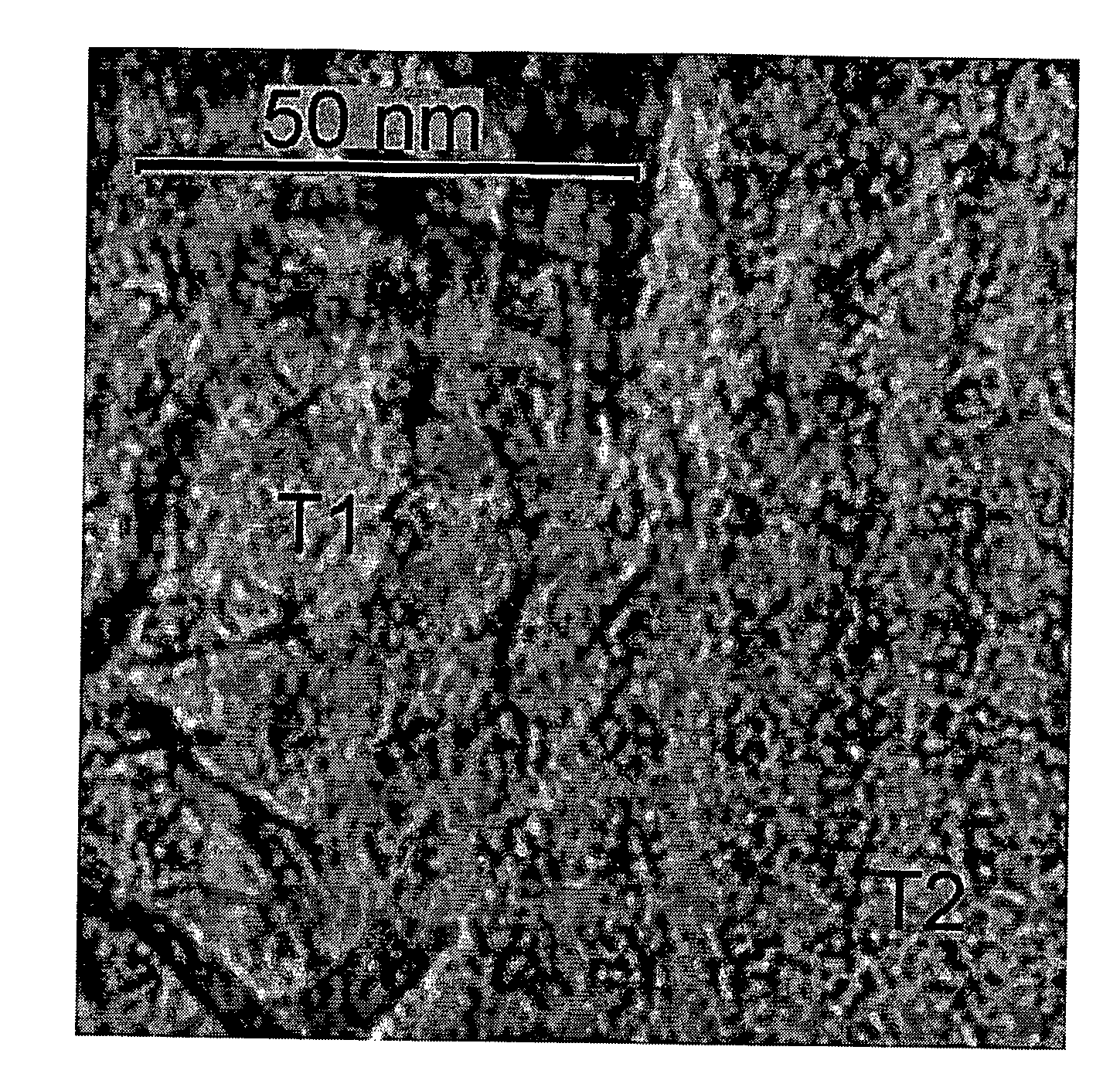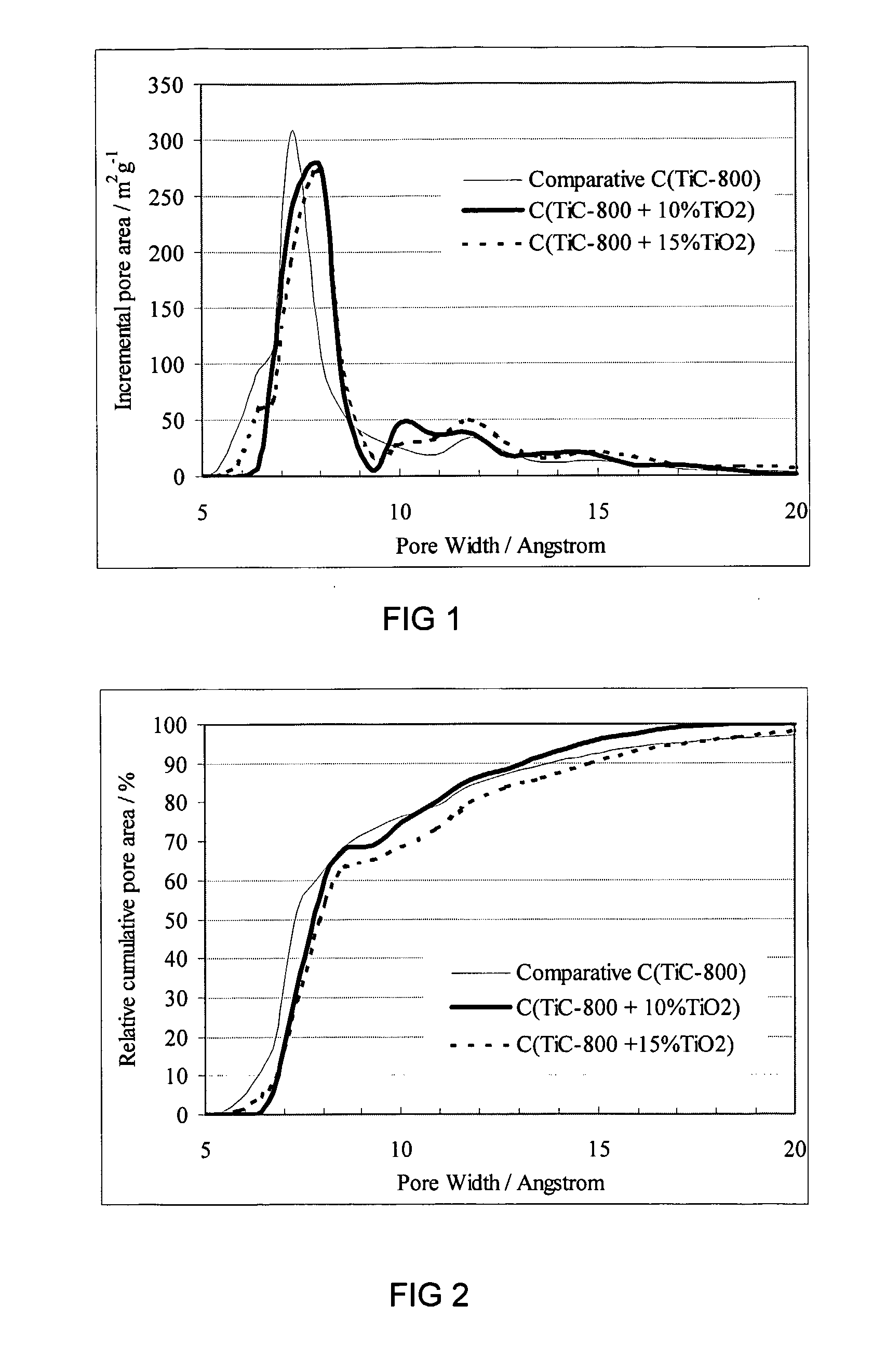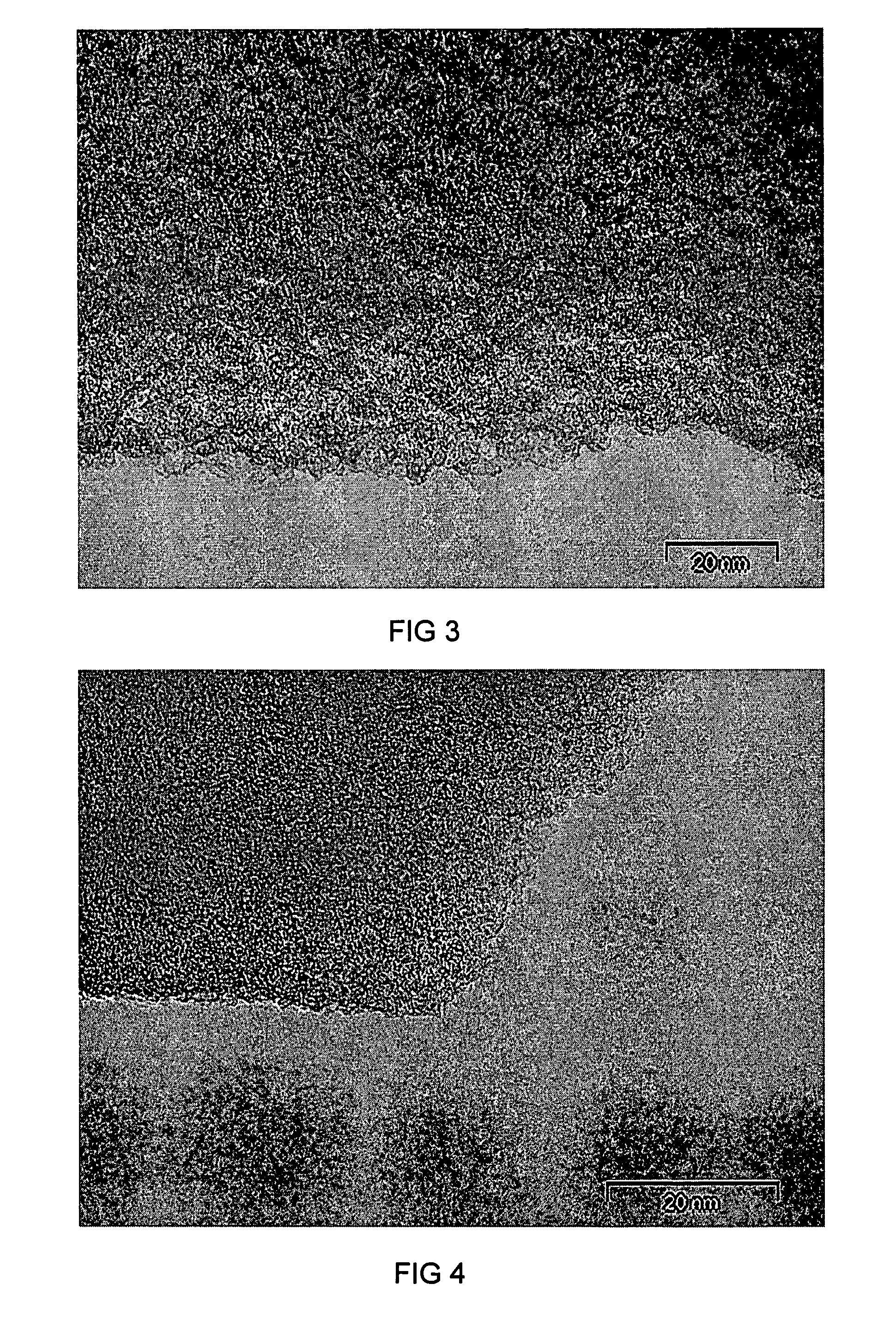Method Of Making The Porous Carbon Material And Porous Carbon Materials Produced By The Method
a technology of porous carbon and carbon materials, which is applied in the direction of biocide, plant growth regulators, inorganic chemistry, etc., can solve the problems of loss of molecular sieve behaviour of carbide-derived carbon, inability to avoid formation of inaccessible very small micropores, and the quantity of pores with desired pore size in bulk volume of carbon, etc., to achieve advanced sorption properties and improve pore size distribution
- Summary
- Abstract
- Description
- Claims
- Application Information
AI Technical Summary
Benefits of technology
Problems solved by technology
Method used
Image
Examples
example 1
[0037]According to the first embodiment of the invention the titanium carbide (H. C. Starck, grade C.A., 50 g) with an average particle size of 1.3-3 microns was thoroughly mixed with Titanium oxide powder (Kemira, 2.5 g). This mixture was thereafter loaded into a quartz stationary bed reactor and let to react with a flow of chlorine gas (99.999% assay) for 3 h at 800° C. Flow rate of chlorine gas was 1.5 l / min. The by-product, TiCl4, was led away by the stream of the excess chlorine and passed through a water-cooled condenser into a collector. After that the reactor was flushed with Argon (0.5 l / min) at 1000° C. for 1 h to remove the excess of chlorine and residues of gaseous by-products from carbon. During heating and cooling, the reactor was flushed with a slow stream (0.5 l / min) of argon. Resulting carbon powder (9.6 g) was moved into quartz stationary bed reactor and treated with hydrogen gas at 800° C. for 3.5 h to dechlorinate deeply the carbon material and also to remove the...
example 2
[0043]According to the second embodiment of the invention the fluidized bed reactor was loaded with titanium carbide (Pacific Particulate Materials, 400 g) with an average particle size of ˜70 μm and flowed with the Argon until the reaction temperature was achieved. Thereafter the carbide was let to react with a flow of chlorine gas (99.999% assay) for 15 min at 950° C. Flow rate of chlorine gas was 7 l / min. The by-product, TiCl4, was led away by the stream of the excess chlorine and passed through a water-cooled condenser into a collector. After that the reactor was flushed with Argon (6 l / min) for 20 min and the temperature of reactor thereafter was decreased to 800° C. At 800° C., chlorination of the carbide was completed using chlorine flow of 7 l / min. Thereafter again the reactor was flowed with Argon (3 l / min) and flushed at 1000° C. 60 min. Resulting carbon powder (61 g) was moved into quartz stationary bed reactor and treated with hydrogen gas at 800° C. for 4 h to dechlorin...
PUM
| Property | Measurement | Unit |
|---|---|---|
| temperature | aaaaa | aaaaa |
| temperature | aaaaa | aaaaa |
| temperature T1 | aaaaa | aaaaa |
Abstract
Description
Claims
Application Information
 Login to View More
Login to View More - R&D
- Intellectual Property
- Life Sciences
- Materials
- Tech Scout
- Unparalleled Data Quality
- Higher Quality Content
- 60% Fewer Hallucinations
Browse by: Latest US Patents, China's latest patents, Technical Efficacy Thesaurus, Application Domain, Technology Topic, Popular Technical Reports.
© 2025 PatSnap. All rights reserved.Legal|Privacy policy|Modern Slavery Act Transparency Statement|Sitemap|About US| Contact US: help@patsnap.com



